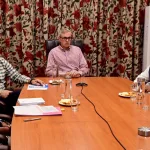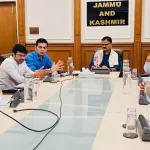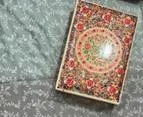Some three decades earlier, ‘Wazwan’ and ‘Bhaande Paether’ were the two premier fascinations of marriage ceremonies in Kashmir. Both the legacies symbolize Kashmir and its uniquely glorious past, encompassing unprecedentedly simple yet cherishing traditions, acculturation and heritage. Though the ‘wazwan’ has grown corpulent with exceedingly high number of non-veg cuisines, but, the ‘Bhaande Paether’ has almost vanished and waned to oblivion. The latter was almost imperative to a marriage in Kashmir, and would draw huge crowds of people. But, now, the folk custom has almost withered away. ‘Bhaande Paether’ (Performance staged by Bhaands) was more than a source of amusement and entertainment for commoners in Kashmir.
‘Bhaande Paether’ was an integral part of our rural marriages, and people would hardly miss any opportunity to have a glimpse of these jesters. Unmindful of being invited or not, people would throng in flocks to enjoy the folk feast of the bhaands. Sight of a transitory dais, in the compound of a house, or the thumping melody of rhythmic patterns of ‘dhol’, would entice people to attend a marriage ceremony. One would endure harsh climatic conditions happily, because the entertainment concoction by these jesters ( Bhaands ) was worth billions. And interestingly, during those days, sources of pleasure derivation and entertainment for common masses were very scanty and rare. Television was confined to a handful of households, that too with only a couple of government channels viz Doordarshan 1 and 2. Though radio was at its zenith, then; but, it had its own limitations.
Well, ‘Bhaande Paether’ in a village would drive people of many peripheries crazy, and would almost cram them togather, to enjoy the appealing plays. The folk artists with sterling genius were admired and loved for their extraordinary comic timings and dialogue delivery. Their skits would enchant onlookers absolutely. My father says that many would bunk their inescapable assignments but would not miss the piece-de-resistance of these jesters. Even many school going grownups would play truant to enjoy the spellbinding performances of the Bhaands. Skits, songs and dance were the three major brands of their artwork. Their cracking jokes would burst people into laughter.
The jesters (Bhaands) were latent with immense ability to extempore. Many of their theatrical tapestries were scripted, but they had a rich innate potential to improvise. Their ad-lib and off-hand renditions were highly commendable. Their live performances were proof of their spontaneous acting skills. They were chefs d’ouerve of contemporary times. Social issues like dowry, corruption, superstitions, gender bias, crime against women, illiteracy used to be chief areas of attraction of their dramas and lampoons. Even their political satires would portray the atrocities and injustice meted out to hapless Kashmiris, by cruel rulers.
Sir Walter Lawrence in his famous travelodge – ” The valley of Kashmir ” remarks : ” It is said that Maharaja Gulab Singh acquired a very intimate knowledge of village administration from the Bhaggats’ ( Bhands ) performances, and I have picked up some hints from them as to the methods of the Patwari, the village accountant.” Thus, ‘Bhande Paether’ was not merely confined to entertainment, rather it was a mirror shown to people at the helm, and those who had been detrimental in the social degeneration and decline of precious moral values. Kashmir folk theatre artists had the courage to lampoon boldly.
The Bhaands were adept musicians who would enthrall their audiences, on their folk tunes. Donned in drooping cotton trousers and Pherans; the Bhaands had a notable appearance. White turbans and cone shaped caps were the hallmark of their looks. Their performances were adorned with the jingle of ‘Surnai’ (The wooden flute) and the rhythmic beat of dhol. The Bhaands of Kashmir were masters at parodying. Their humour with wit would never cross the frontiers of decency. Unlike modern comedians, their acts were impeccably pure and polished. Vulgarism had no space in their performance, yet they would touch the deepest chords of your heart. The great tradition and art has been instrumental in the preservation and conservation of kashmiri language and culture.
Ironically, the folk-theatre of Kashmir valley is on its death bed. Bhaands of our valley have almost given up their ancestral profession of performing on stages. The folk art has suffered on multiple fronts. It has failed to win the necessary governmental patronage, and consequently, the players have shifted to other professions, because it hardly extinguishes the blaze of their hunger. People at the helm should ensure special scholarships, incentives and rewards for the Bhaand children in educational institutions to revive the dying folk tradition. It must be institutionalized to add a new lease of life to it. We can’t afford to lose our century’s old identity so easily.
(The author is an Academician and regular columnist. He can be reached at [email protected])





